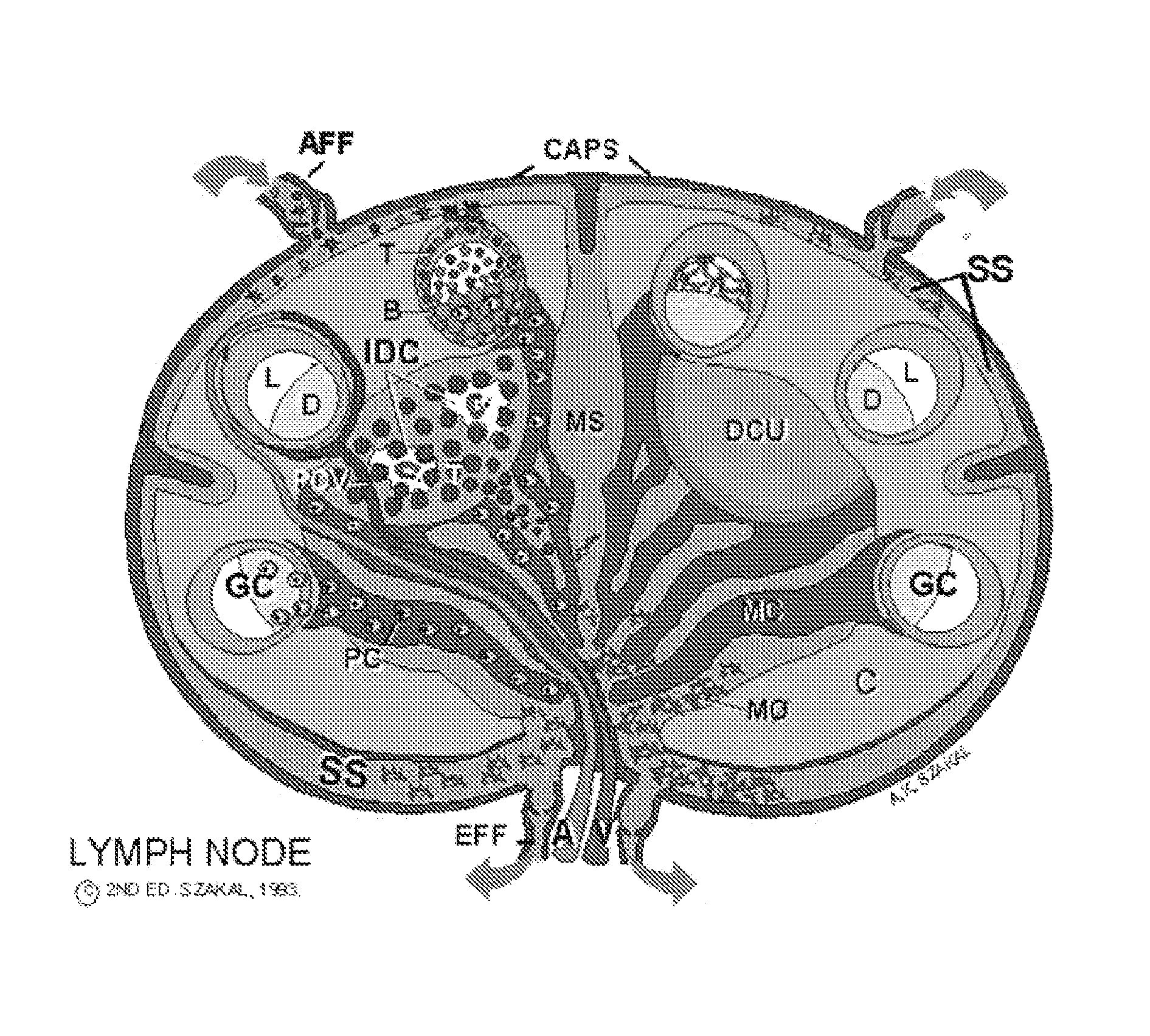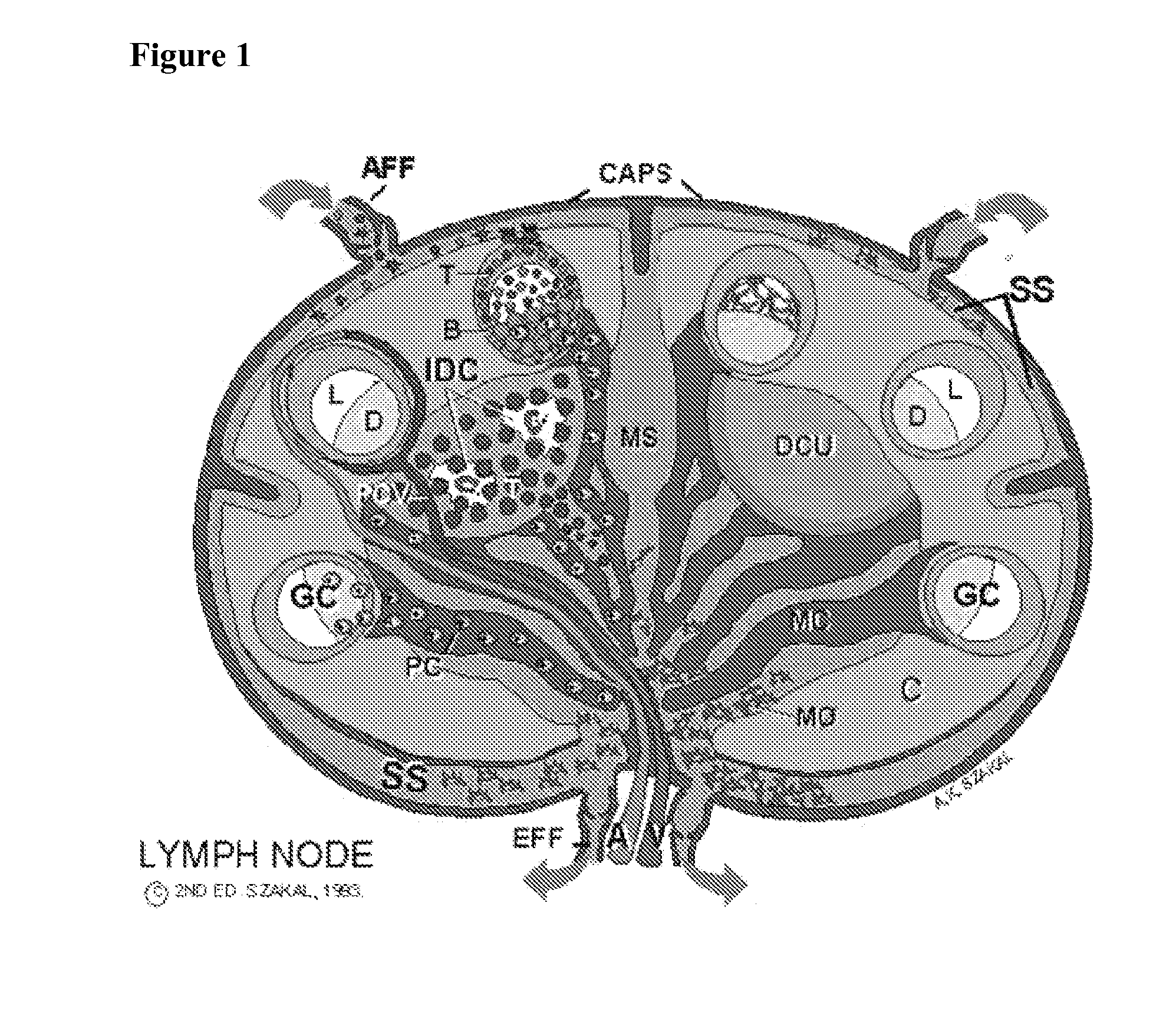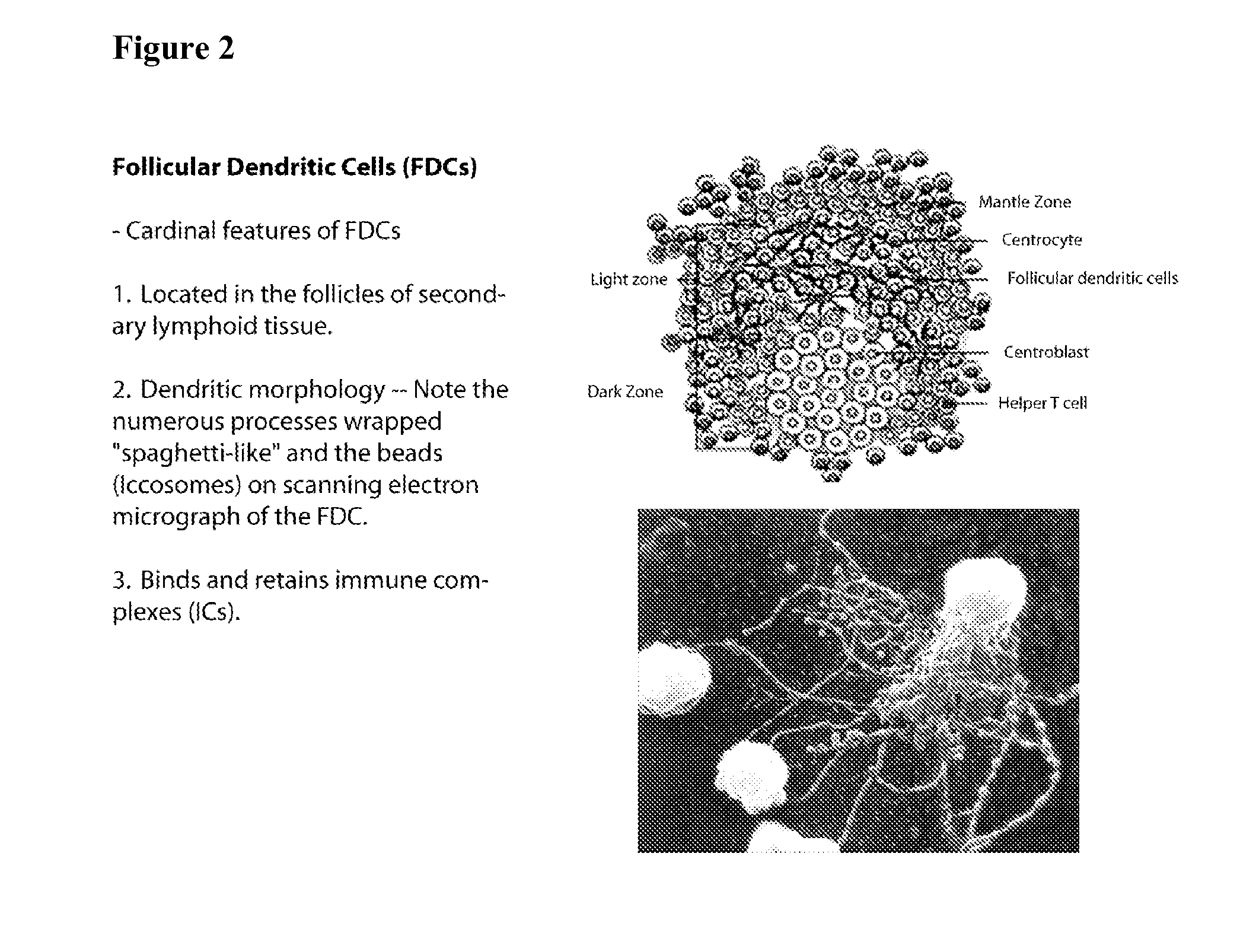Models for vaccine assessment
a vaccine and model technology, applied in the field of human immune system model construction, can solve the problems of increased cost, increased number of new drugs and vaccines reaching the market, and loss of opportunity costs
- Summary
- Abstract
- Description
- Claims
- Application Information
AI Technical Summary
Benefits of technology
Problems solved by technology
Method used
Image
Examples
example 1
Antibody Response to an Experimental Vaccine
[0084] The mouse provides an in vivo model system that enables comparisons with other model systems in vitro.
[0085] Preparation of the mouse model of an embodiment of the present invention comprises: [0086] irradiating mice at 1,000 rad to destroy the murine T and B cells and clear out the lymph nodes. We reason it may be of importance to get rid of as many murine T and B cells as possible, so that human cells flowing through the lymphatics from the site of injection can enter the mouse follicles where a germinal center (GC) could be established. [0087] we then injected ˜16×106 human red blood cells (RBCs) and PMNs intraperitoneally (i.p.) one day before the lymphocytes, to bind murine antibodies that would otherwise react with human CD4+ T cells and B cells and potentially clear them. [0088] tetanus anti-tetanus immune complexes were then injected into four sites (the hind foot pads and front legs) using ˜25 ng of tetanus toxoid (TT) pl...
example 2
The Model Immune System of the Present Invention Can be Used in Vaccine Assessment
[0091] CD4+ T cells and B cells can readily be obtained from many human subjects. T cells can be primed by exposure to various forms of an experimental vaccine or vaccine formulation and then injected with the B cells into lethally irradiated mice with the vaccine loaded on FDCs in vivo.
[0092] This model immune system can be used to answer many questions including, for example, [0093] how many people could potentially respond to a given vaccine or vaccine formulation, [0094] what proportions of the population are high, moderate, and low responders, and
whether the same people respond to different forms of the same vaccine or do some people respond to one formulation and others respond to other formulations.
example 3
[0095] Because many animals did not survive for 14 days when irradiated at 1,000 rad, the radiation dose was reduced to 600 rad. This improved survival. The experiment conducted was as follows: [0096] mice were irradiated at 600 rad to destroy the murine T and B cells and clear out the lymph nodes. [0097] we then injected ˜16×106 human RBCs and PMNs i.p. one day before the lymphocytes, to bind murine antibodies that would otherwise react with human CD4+ T cells and B cells and potentially clear them. [0098] tetanus toxoid and goat anti-tetanus immune complexes were injected into four sites (the hind foot pads and front legs) or i.p. to load the spleen (goat anti-TT was used to avoid introducing any human anti-TT into the mouse, which could contribute to background). [0099] in this example, we then injected total PBMC rather than the purified CD4+ cells and B cells. We did this to examine whether irrelevant cells would pass by the follicles and not cause a problem in vivo (whereas th...
PUM
| Property | Measurement | Unit |
|---|---|---|
| time | aaaaa | aaaaa |
| time | aaaaa | aaaaa |
| time | aaaaa | aaaaa |
Abstract
Description
Claims
Application Information
 Login to View More
Login to View More - R&D
- Intellectual Property
- Life Sciences
- Materials
- Tech Scout
- Unparalleled Data Quality
- Higher Quality Content
- 60% Fewer Hallucinations
Browse by: Latest US Patents, China's latest patents, Technical Efficacy Thesaurus, Application Domain, Technology Topic, Popular Technical Reports.
© 2025 PatSnap. All rights reserved.Legal|Privacy policy|Modern Slavery Act Transparency Statement|Sitemap|About US| Contact US: help@patsnap.com



